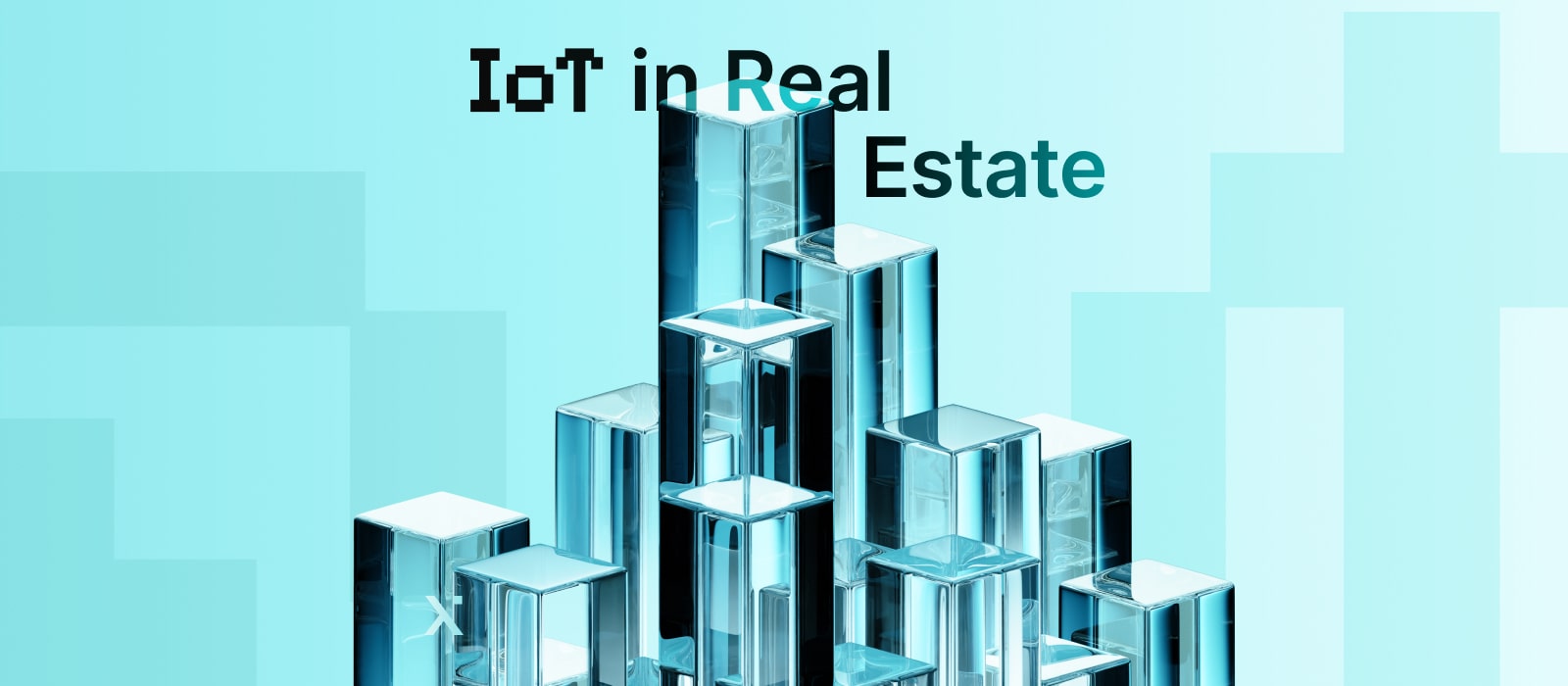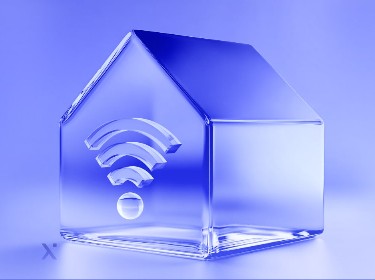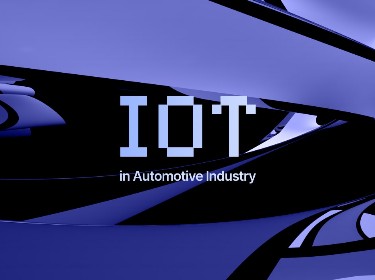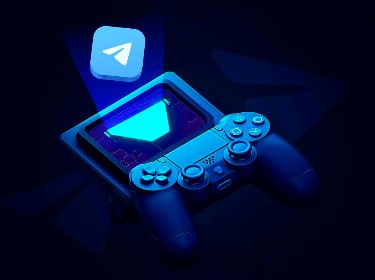In a world where smart homes set the temperature and humidity, and TV systems play favorite shows at pre-set times, people can save the released time for something more exciting. Read on to discover why investing in IoT for real estate is a game-changer.
Imagine the situation when you come back home after a hard day and find your thermostat refusing to turn down the heat. At this very moment, the lights start flickering, and Alexa plays eerie music with the sounds of villainous laughter. Although the picture corresponds more to a Hollywood sci-fi thriller, the IoT technologies do transform our everyday living. However, instead of fearing a robot rebellion, we’d rather focus on how to use these advanced technologies and make our lives safer and more convenient.
PixelPlex has been implementing IoT software ideas since 2007. We discussed the latest trends with our experts and are ready to share the insights. Take your time to learn more about the IoT in real estate, its applications, benefits, and case studies.
IoT in real estate market trends
![]()
Various data agencies predict different figures regarding the value of the smart homes market in the next 5 to 10 years. What unites these predictions is the speed of growth of around 10% CAGR. We aren’t looking for the right figures, but rather trying to analyze the triggers. What factors make the IoT real estate market increase?
Technological development
Technologies are developing and penetrating into each other. The combination of IoT development services with the potential of AI opens vast opportunities for the vendors. For example, in January this year, Arlo Technologies announced a partnership with Origin AI. They’ve come up with a smart security system that allows tracking human presence through radio frequency (RF) signals transmitted by WiFi devices inside the room or office. The solution increases the accuracy of data and reduces false alarms. Under the agreement, Arlo Technologies has the right to sell Origin AI’s products. This solution demonstrates a breakthrough in security technologies, as users can remotely manage their safety systems. AI assistants notify dwellers of any suspicious activities around their homes, and they also adapt to users’ habits and create a customized living ecosystem.
High-speed internet
The speed of the Internet is increasing. The 5G connections are spreading 4 times quicker than 4G at the corresponding phase. There are more than 2.25 billion 5G-connected devices worldwide. Reliable connections provide smart devices with flawless performance. Remote smart home appliances become easy to monitor, manage, and set up with fast Internet. They generate real-time updates and timely notify users of any changes in the environment.
Energy efficiency
People have become more aware of the ecological concerns. They worry about sustainability, and smart home devices allow them to be more environmentally friendly. Energy-efficient technologies cut utility costs by optimizing energy use. Smart sensors analyze climatic conditions and homeowners’ daily routines and reduce unnecessary consumption. Governments are actively supporting these initiatives with various incentives, stimulating people to purchase smart energy solutions.
PixelPlex created an app to manage locks, lights, roller blinds, and other devices, some of which didn’t even possess a native Internet connectivity. Any idea is possible with our team of experts. Check out the details of the Smart Home project
Key IoT real estate components
Types of solutions for the IoT in real estate are different. We’ve divided them into four groups according to their components and briefly highlighted their key purposes.
![]()
Hardware
When we hear about the IoT in homes, we probably think first of all about this category. Surveillance cameras, sensors, and automation devices help make homeowners’ daily routine secure and easy to handle. The IoT hardware is further divided into the following purposes:
- Security devices: These include smart locks (August Smart Lock, Yale Assure), surveillance cameras, and motion sensors. Their purpose is to ensure safety. They provide remote access control and real-time entry logs, as well as unusual movement detection or alerts of unauthorized access.
- Home automation tools: They do their best to optimize the comfort and energy use of the people living inside. These are smart thermostats (Nest, Ecobee) and automated lighting systems. They adjust heating or cooling accordingly, reducing waste.
- Home entertainment systems: After securing oneself with smart locks and adjusting the right temperature and air quality, it’s time to relax. These IoT types include integrated audio and video devices controlled via IoT apps or voice assistants.
- Home healthcare equipment: Smart devices that care about your health. Sensors monitoring air quality, humidity, and even resident health indicators help maintain wellness. Assisted living or multi-family residences benefit from this tech the most as they improve patient outcomes.
Smart appliances
Apart from hardware, smart thermostats, energy smart plugs, and other IoT devices should have “brains”, i.e., systems that allow for remote control, usage data, and integration with home management systems, promoting convenience and energy savings. For example, internet-enabled refrigerators, ovens, and energy-efficient plugs significantly improve the quality of residents’ lives. Companies that offer real estate software development services know how to make any device “understand” what it’s doing and how to optimize the process.
AI speakers
All of us have tried communicating with these guys and compromising their answers. Amazon Alexa and Google Home devices act as central hubs in people’s homes. They understand voice commands, control smart devices, schedule activities, tell your child a fairy tale, or help you recall the name of that actor on the tip of your tongue.
Services
The service components of IoT in homes refer to software, programs, and cloud-based systems. They allow for data gathering and analysis. For example, while the hardware of a robotic vacuum cleaner includes its physical design, cleaning brushes, and sensors, the software inside controls its cleaning patterns and adapts the operation to different floor types or room layouts.
Navigating IoT Connectivity Technologies
IoT in Automotive Industry
Blockchain in IoT
Applications of IoT in real estate
![]()
The components that the real estate IoT consists of can be used in various combinations in the following systems:
Smart building management systems
Smart IoT devices have brought smart HVAC systems management. Sensors, temperature, and air quality meters connect with weather forecasts and databases and optimize the settings to reduce energy consumption and cut costs.
Predictive maintenance
IoT devices collect the data. Further analysis of this data allows for predictive maintenance and timely fixing of any possible problems. Residents or property managers can install special meters and sensors in strategic locations, such as water pipes and valves, roof, elevators, electrical panels, etc., to detect leakages, plumbing issues, noise pollution, vibration, and other troubles. The beacon technology also helps real estate agents arrange virtual tours for potential tenants. They don’t have to commute to the location, but rather enjoy the tour on the screen of their mobile device.
Safety systems and access control
Cameras, smart locks, and motion detectors create a safe environment for residential areas. Homeowners keep an eye on their property even remotely. However, the software that ensures security for homeowners should also be developed in accordance with security regulations. For example, there was a flaw with Apple’s HomeKit system, when a super secure door lock was actually welcoming everyone, as it didn’t verify who sent the message to open the door. It’s like keeping a golden retriever to protect a house from burglars. Therefore, careful development and testing of the solution is a must, even for renowned brand names.
Smart home automation
Homeowners enjoy comfort and a personalized lifestyle. Smart IoT devices help them in that. The convenience of managing all those devices in one app adds additional bonuses. For example, with an app from Samsung, SmartThings, users set rules for turning on or off their lights, TV, etc. It also tracks sleeping habits, measures humidity, temperature, and other metrics important for healthy sleep.
Remote property management
The integration of beacon technology allows real estate agents to more easily reach potential buyers. Beacons are Bluetooth devices that are installed in a property for sale and send information about this property to potential renters or buyers. For example, a person looking for a new house may pass a building with beacons and therefore receive notifications with photos, size, price, and other details. As a result, there’s no need to address an agent. If the property is attractive to tenants, it is possible to make a reservation inside the app, which is also very user-friendly.
Examine how PixelPlex developed a VR real estate platform to help agents demonstrate properties on sale via virtual tours
Environmental monitoring
Smart resource management systems allow for controlling the amounts of energy used, cutting costs, and therefore, living an environmentally friendly lifestyle. Besides that, smart home IoT solutions appear to target customers with pets. For example, a smart pet door prevents other animals from entering, tracks your pet’s activity, and schedules walks for them. Another example is a bird feeder that uses AI to identify birds and capture their images and even videos.
Space utilization
The data from the IoT equipment helps optimize space use and scheduling in offices and retail. Special sensors and data analytics monitor how building spaces are actually used. For example, occupancy sensors track how many people are in rooms, offices, or meeting areas at different times. This data lets property managers identify underused or overcrowded spaces, so they can optimize space allocation, reduce wasted area, and improve tenant comfort. Buildings dynamically adjust lighting, heating, and cooling based on real-time occupancy. Additionally, space utilization data helps with compliance during health crises by ensuring occupancy limits are met.
Energy and resource management
Smart sensors and IoT devices monitor and control energy consumption in real time. For example, IoT systems track electricity, water, and HVAC usage across a building. This data enables automated adjustments like turning off lights in empty rooms, optimizing heating and cooling based on occupancy, and detecting leaks early to prevent waste.
How much does it cost?
Here is a table listing five common types of IoT software used in real estate, with approximate cost and timeline estimates based on the latest industry trends:
| Type of IoT software | Typical features | Estimated development cost (USD) | Approximate timeline |
| Building management systems (BMS) | Integrates HVAC, lighting, security, and energy management; real-time monitoring & control | $100,000 – $250,000 | 4 – 8 months |
| Energy consumption & optimization | Smart meters, consumption analytics, predictive usage, automated energy saving adjustments | $70,000 – $150,000 | 3 – 6 months |
| Security monitoring platforms | Video surveillance integration, access control, alarm management, real-time alerts | $80,000 – $180,000 | 3 – 6 months |
| Healthcare & wellness monitoring | Indoor air quality tracking, health sensors data aggregation, emergency alerts | $60,000 – $130,000 | 3 – 5 months |
| Smart home entertainment control | Multi-room streaming, voice integration, connected audio/video devices management | $50,000 – $120,000 | 2 – 4 months |
- Costs depend on feature complexity, integration requirements, platform targets (web, mobile), cloud infrastructure, and security compliance.
- Timelines include initial MVP development, testing, and deployment phases.
- Partnering with experts who provide custom software development services ensures smoother integration with physical hardware and scalability.
Business benefits of IoT in real estate
![]()
The main goal of the IoT smart devices is to make people’s lives more comfortable and secure. However, while developing a solution, it is important to formulate objectives more precisely. As a business owner, you should know what you help your customers with.
Cost savings
Users of the IoT smart home products save utility costs. Energy-efficient technologies such as smart thermostats and automated lighting adjust the usage of energy according to weather conditions and homeowners’ preferences. As a result, utility bills and operational expenses shrink. A smart thermostat, for example, might save up to 10% on air conditioning bills.
Enhanced security
The next benefit is safety. Smart surveillance cameras, access control systems, and real-time monitoring make people feel protected inside their homes. Apart from securing people from unwanted visitors, IoT sensors may also alert about possible leakages, fire, or breakdowns. Such proactive incident management allows for timely troubleshooting.
Environmental sustainability
Environmentally-friendly tenants are satisfied with the IoT in real estate solutions. These technologies help them reduce resource consumption and contribute to a green and sustainable environment.
Improved tenant experiences
Residents relax at home after their working routine with optimized entertainment systems, AI voice assistants, and automated chores. IoT devices increase comfort, convenience, and satisfaction for homeowners.
Optimized resource consumption
Whether residents wish to save costs or care about resource consumption, real-time monitoring systems allow them to achieve their goals. Smart platforms control energy, water, and space utilization, reduce waste, and increase operational efficiency.
Competitive edge of real estate agencies
Choosing a new house or apartment might be a tiresome experience. IoT technologies facilitate the process for both real estate agents and potential buyers. Virtual tours, online property data, and beacon technology help to make at least the first impression of a place. Implementing metaverse development services allows for further digitization of the real estate market.
What Are Mobile Beacons?
AI Business Ideas
IoT real estate examples
![]()
Samsung
Samsung’s SmartThings is a smart home hub that connects lights, thermostats, cameras, and outlets. It supports Bluetooth, Matter, Thread, and Zigbee connectivity. The system allows users to control their systems from a mobile app, receive alerts if something needs attention, set laundry programs remotely, monitor the expiry dates of the products inside the refrigerator, and much more. The AI energy mode optimizes the energy use, so that homeowners cut their bill costs. The platform holds the leading position of smart home technologies in 2025.
Eve Systems
Eve Systems is a consumer electronics company. It produces smart home accessories compatible with Matter, Alexa, Apple HomeKit, and Google Home. The products include smart sensors for motion, temperature, humidity, and energy plugs, smart thermostats, and security cameras. The Eve Light Switch enables homeowners to control the light bulbs with an app or by voice commands.
Shelly (Allterco Robotics)
Shelly is a brand name of the home automation tools produced by a global manufacturer, Allterco Robotics. They offer devices like smart switches, relays, and sensors that control lighting, climate, and energy consumption. The products are suitable for both residential and commercial properties and support integration with popular smart home platforms. There’s also the Shelly cloud app for simple control of the connected devices.
Honeywell
Besides smart automation, Honeywell operates in aerospace, building and industrial automation, and sustainable solutions. Among its smart home solutions, there are HVAC and building management systems that use sensors to monitor and optimize heating, ventilation, and air conditioning based on occupancy and environmental data. Their smart home security system integrates with Amazon Alexa voice control and monitors all smart devices in a house.
August (Assa Abloy Group)
August Home joined Assa Abloy to work on secure access control systems. Users can monitor their IoT-enabled smart locks remotely via mobile apps. The features include keyless entry, visitor management, and enhanced security for homes and office buildings.
Conclusion: Choosing the right software development partner
The technologies of IoT improve the living conditions of people with energy-saving tools, facilitate chores, and provide customized experiences. Companies that offer IoT products or real estate agencies might need the expertise of software development companies like PixelPlex. Partnering with technological experts allows for avoiding possible difficulties, such as
- Integration complexities
- Security hazards
- Maintenance and scalability issues
- Leveraging legacy technologies
- Challenges in future home integration
PixelPlex specializes in building scalable and secure IoT solutions tailored to client needs. Our team has a portfolio of projects that demonstrate smooth interoperability across devices, adhere to strict data protection standards, and bring businesses the results they were looking for. Contact us to discuss your ideas.
FAQ
The study of the University of Oxford, together with Ochanomizu University in Tokyo, predicts that 40% of household chores will be automated in 10 years’ time. While this future is still approaching, the IoT market is already transforming everyday life with safety tools, energy-saving solutions, and smart devices that simplify daily routines. The tendency will develop, making IoT products and smart platforms more affordable and personalized, integrating even more possibilities into living environments.
Blockchain adds security and trust to IoT by keeping property data and transactions safe and transparent. It helps automate processes like rent payments and ownership transfers with smart contracts, making real estate deals faster and less prone to fraud.
Determine the focus of your automation product (security, energy management, comfort). Do research on the market and compatible devices. Choose a platform or hub to connect and manage all the devices. It is always wise to consult a software developer company that has experience in the domain. Firms like PixelPlex will examine your goals, come up with a roadmap, develop an MVP, and support you through the entire development cycle.
Mobile apps allow users to manage their IoT devices and smart home platforms with the help of a smartphone. For developers, it means increased demands for security compliance, interface design, and performance. Mobile apps should be highly efficient, responsive, and user-friendly to provide people with the possibility to monitor their home systems in real-time.




